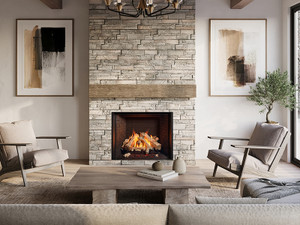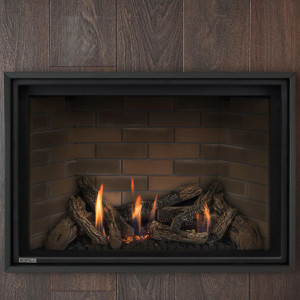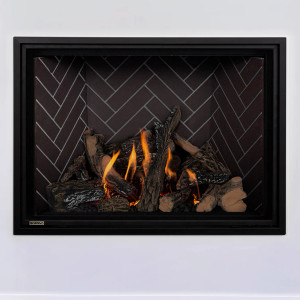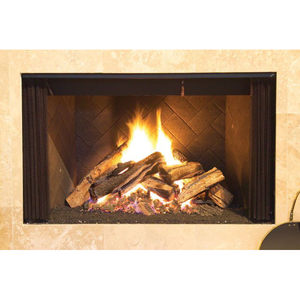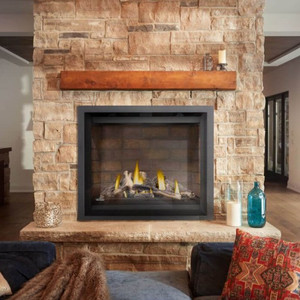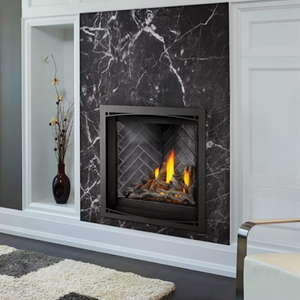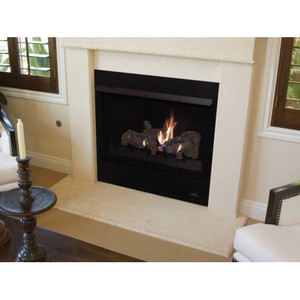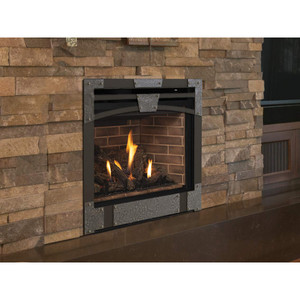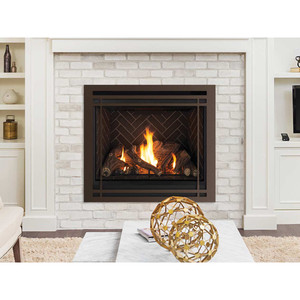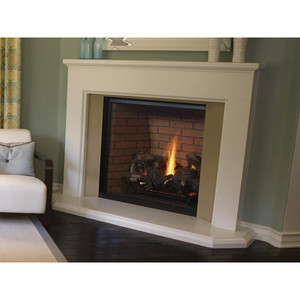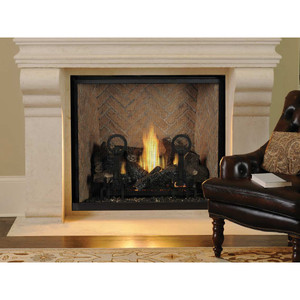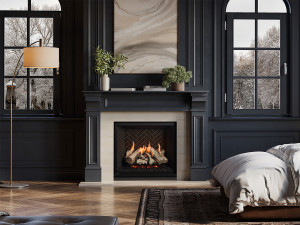
-

-

-
-

-

-

Regency Grandview G1200 Premium Gas Fireplace
Regency Fireplace Products-Gas Inserts, Wood Stoves & More
Shop Now -

-

Montigo DelRay Square Series DRSQ46 Direct Vent Gas Fireplace
Montigo Luxury Gas Fireplace and Insert Products
Shop Now -

Montigo DelRay Square Series DRSQ42 Direct Vent Gas Fireplace
Montigo Luxury Gas Fireplace and Insert Products
Shop Now -

-

-

-

-

-

-

-

-

-

-

-

-

-

Regency P33CE Traditional Clean Face Gas Fireplace
Regency Fireplace Products-Gas Inserts, Wood Stoves & More
Shop Now -

Traditional Gas Fireplaces: Comfort & Convenience
There’s something classic and comforting about a traditional gas fireplace. Whether you’re looking to bring cozy warmth to a living room or create an inviting focal point in your home, these fireplaces offer the perfect blend of old-world charm with modern convenience. Unlike wood-burning fireplaces, traditional gas models give you that authentic, flame-filled ambiance without the hassle of chopping wood or cleaning up ash. Just the flick of a switch, and you're enjoying a toasty fire in seconds.
What Is a Traditional Gas Fireplace?
A traditional gas fireplace is designed to mimic the look and feel of a classic wood-burning fireplace, complete with realistic logs, dancing flames, and that signature warm glow. What sets it apart is the convenience of gas as the fuel source—either natural gas or propane—making it more efficient and easier to use. Traditional gas fireplaces can come in various styles and sizes to match different home aesthetics, from rustic to more elegant, formal designs. Whether you're updating an old hearth or installing something new, these fireplaces carry timeless appeal and also keep things simple and efficient.
While traditional gas fireplaces excel in aesthetics, they also provide a reliable source of supplemental heating. Some traditional gas fireplace models incorporate energy-efficient technologies to optimize warmth and minimize heat loss. Unlike modern gas fireplaces that prioritize sleek finishes and simplicity, traditional fireplaces celebrate intricate details and craftsmanship. They bring a sense of timeless elegance to any space.
Types of Traditional Gas Fireplaces
When it comes to traditional gas fireplaces, you’ve got a few different options that can fit your home’s style and heating needs. Here’s a quick look at the most popular types:
Direct Vent Traditional Gas Fireplaces
These are the most common and efficient option for traditional-style gas fireplaces. They draw air from outside for combustion and send exhaust gases back out, keeping your indoor air quality intact. Direct vent models are great if you want that classic fireplace look without needing a chimney or worrying about indoor pollutants.
B-Vent Gas Fireplaces
B-vent, or natural vent fireplaces, pull in air from inside your home and vent it outside through a vertical chimney. They’re less efficient than direct vent models but still offer that cozy, old-school fireplace vibe. If you already have a chimney, these might be a more affordable and practical option to consider.
Vent-Free or Ventless Gas Fireplaces
Vent-free models are all about convenience. They don’t need any external venting, which means you can install them in almost any room. While they’re super efficient, vent-free fireplaces do release small amounts of combustion byproducts into your indoor air, so it's crucial to follow all safety guidelines, like proper room size and ventilation.
Insert Gas Fireplaces
If you’ve already got a wood-burning fireplace but want to convert it into a gas fireplace, gas inserts are your go-to. They slide right into the existing fireplace and give you that traditional look with way less hassle—no more wood chopping or cleaning out ashes. They’re efficient and easy to use, which makes them a favorite among homeowners looking to upgrade.
Fuel Options for Traditional Gas Fireplaces
When it comes to fueling your traditional gas fireplace, you've got two main options, and both offer convenience compared to wood-burning alternatives. Here’s what you need to know:
Natural Gas
Natural gas is the most common fuel source for traditional gas fireplaces. It’s piped directly into your home, so you never have to worry about running out of fuel. Natural gas is relatively affordable and burns clean. That makes it a convenient and eco-friendly choice. Plus, if you already have natural gas service in your home, connecting it to your fireplace is pretty straightforward.
Propane
If natural gas isn’t available in your area, propane is another solid option. It’s stored in an external tank, and while it’s a little pricier than natural gas, propane burns hotter, so you get more heat output. This makes propane an excellent choice for homes in colder climates or places without direct access to a natural gas line.
Both fuel types are efficient and reliable, but your choice really depends on availability and what works best for your setup. Just make sure you get your fireplace installed by a professional who understands the specifics of gas lines and safety requirements.
What Is the Most Realistic Natural Gas Fireplace?
Take a look at the Valor Portrait Series and Napoleon E42NTE Elevation Series. These are examples of realistic natural gas fireplaces but take note that realism depends on several factors. The appearance of flames, the quality of logs used, and even the overall design can dictate the gas fireplace’s realism. But keep in mind that a realistic gas fireplace lies in its flames.
Modern gas fireplaces use advanced technology to create flames that mimic the movement and color of real wood-burning flames. The most realistic models feature random, dancing flames with varying heights, providing an authentic feel. Look into Valor whose models often feature intricate log sets and vivid flames, providing an authentic look and feel. Or perhaps consider Napoleon because their gas fireplaces combine style and realism. With advanced burner technology and high-quality logs, they deliver captivating, lifelike fires. Brands like Ortal and Regency are also inclined to realism.
What Kind of Traditional Gas Fireplace Should I Buy?
Choosing the right traditional gas fireplace involves a few considerations. Here’s a quick list of features and factors to keep in mind:
1. Venting Type
Decide between direct vent, B-vent, or vent-free based on your home’s setup and air quality preferences. Direct vent is ideal for efficiency and safety, while vent-free offers flexibility in placement.
2. Size and Heating Capacity
Match the size of the fireplace to the room it will heat. Check the BTU rating to make sure it provides enough warmth for your space without being overpowered.
3. Style and Design
Choose a design that complements your home’s decor. Whether you prefer a classic look with ornate details or a sleek, modern finish, there are plenty of styles to go with any aesthetic.
4. Fuel Type
Natural gas is convenient if you already have a line, while propane is great for homes without natural gas access. Make sure the fireplace you choose is compatible with your fuel source.
5. Control Options
Look for models with user-friendly controls. Some come with remote controls or smart home integration for easy operation, while others feature manual knobs for a more traditional approach.
6. Safety Features
Check if your traditional gas fireplace has safety features like automatic shut-off systems, heat shields, and flame sensors to keep your home safe and comfortable.
7. Installation and Maintenance
Consider the ease of installation and the maintenance requirements. Some models are easier to install and clean than others, so pick one that fits your lifestyle and capabilities.
So in short, finding the perfect traditional gas fireplace for your home is all about balancing style, functionality, and convenience.
Traditional Gas Fireplace FAQs
Turning on a traditional gas fireplace is straightforward, but it’s essential to follow the steps carefully to ensure safety. First, make sure the gas valve is open and the fireplace is connected to a power source if needed. Next, locate the pilot light control, which is usually a knob or switch near the bottom of the fireplace. Turn it to the “Pilot” position and press it to ignite the pilot light.
Once the pilot light
is lit, turn the control knob to the “On” position to start the main burner. If your fireplace has an ignition button or remote control, you might be able to start it with just a push. Always check the manufacturer’s instructions for specific guidance related to your model.
The main differences between modern and traditional fireplaces lie in their design, functionality, and technology. Traditional gas fireplaces feature classic designs with ornate details and are usually made from materials like brick or stone. They may include elements like a chimney or flue for venting smoke and gases.
Modern fireplaces, on the other hand, are all about sleek, minimalist design and advanced technology. They come with clean lines, glass panels, and innovative features like remote controls and programmable settings. Modern fireplaces are designed to fit into contemporary interiors and sometimes even use direct vent or vent-free systems which makes them more flexible and efficient.
Keeping the pilot light on in a gas fireplace is a matter of convenience and safety. The pilot light helps to make sure that the main burner ignites easily when you turn on the fireplace. If you use your fireplace frequently, keeping the pilot light on can save you the hassle of relighting it each time. However, if you won’t be using the fireplace for an extended period, it’s a better to turn off the pilot light to conserve gas and prevent potential issues. Always refer to your fireplace’s manual for specific recommendations on whether to keep the pilot light on or off, as some models may have different requirements.
If you have any questions about your traditional gas fireplace, feel free to give us a call at Luxury Fire and we’ll be happy to help you out.





